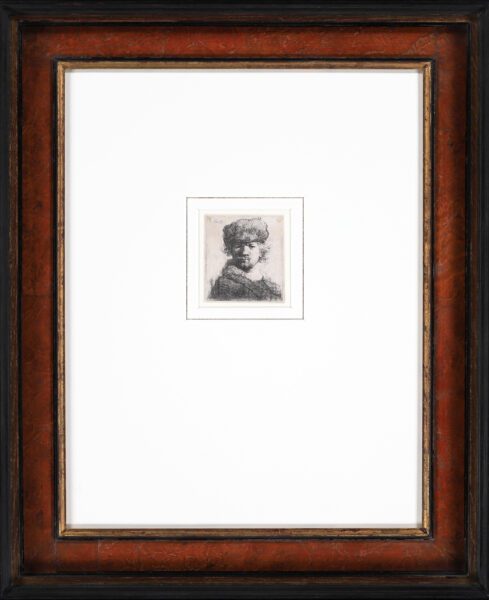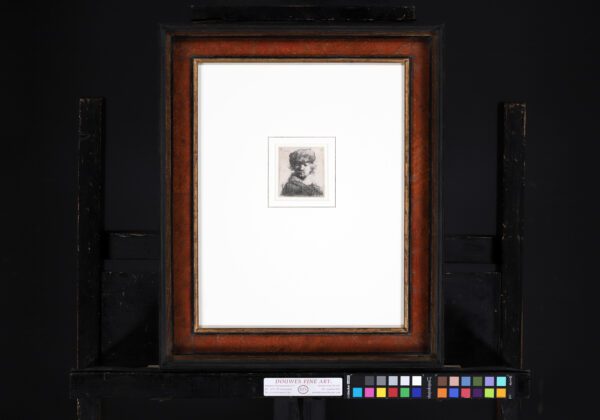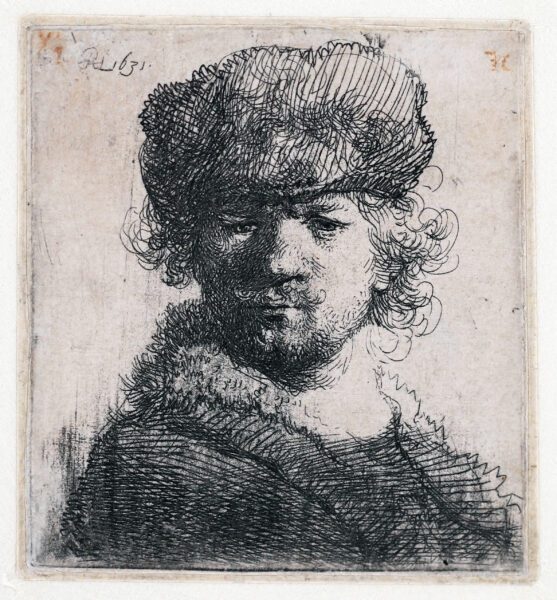“Self-portrait in a heavy fur cap”, 1631
etching on laid paper: 6,2 x 5,2 cm
signed in monogram and dated upper left: RHL 1631
"*" indicates required fields
Notes
During his lifetime, Rembrandt’s extraordinary skills as a printmaker were the main source of his international fame. Unlike his oil paintings, prints travelled light and were relatively cheap. For this reason, they soon became very popular with collectors not only within but also beyond the borders of the Netherlands.
Rembrandt’s etchings are remarkable for their high number of self-portraits (over 30 out of about 290). These are particularly collectible, perhaps due to the smaller number of states as well as the artist’s compelling and powerful presence. Unlike his stately religious scenes, or regal, posed portraits of others, which exhibit his careful and calculating brilliance as an etcher, Rembrandt’s self-portraits reveal him as an artist and a man. In them he assumes the role of the experimenting artist, approaching the most difficult of subjects – himself. These self-portraits are often described as ethereal and wistful for their notable contrasting areas of high and low etched space.
Rembrandt always had a penchant for fancy dress and interesting headgear, some historic and exotic, some quotidian – berets, plumed hats, broad- and narrow-brimmed hats, fur caps – as this early, small self-portrait attests to. The print is signed with his initials RHL (‘Rembrandt Harmensz. Leidensis’) and dated 1631, the year he moved to Amsterdam. Whether he was still living and working in Leiden at the time he etched this plate cannot be said with certainty. By 1633 however, he was no longer using his initials, but signed with his full first name.
He has matured since his earliest self-portraits and grown a proper moustache, where before there was only a bit of fluff on his upper lip, and is beginning to show an interest in depicting different textures in etching, such as the fur of his collar. The evocation of different surfaces and fabrics was a skill he would bring to absolute perfection in painting much earlier than in etching, with the extensive use of drypoint in prints such as that of Jan Lutma, Goldsmith. It was certainly easier to achieve these effects in oil paint than in black ink only, as his portrait painting of the fur trader Nicolaes Ruts (Frick Collection, New York) of the very same year, 1631, demonstrates.
This small print is also an early example of Rembrandt’s very effective use of blank paper, in that he left part of the collar and his neck white and undefined, thereby creating contrast and tension.
The Self-Portrait in a heavy Fur Cap: Bust exists in one state only. The present impression is printed with a light veil of plate tone, and the smoky vertical band of wiping marks across the left part of the figure adds atmospheric shading to the image.
Literature
Bartsch 16; The New Hollstein Dutch no. 80: First and only state
Plate not in existence – with Nowell-Usticke (1967):
R+ – a scarce portrait
Provenance
- Collection F.F. Hansen (Lugt 2813) – Vendre 1901.
- en D. Colnaghi;
- Kunsthandel Th. Laurentius,1989;
- Private collection, The Netherlands
- By descent to the current owners





